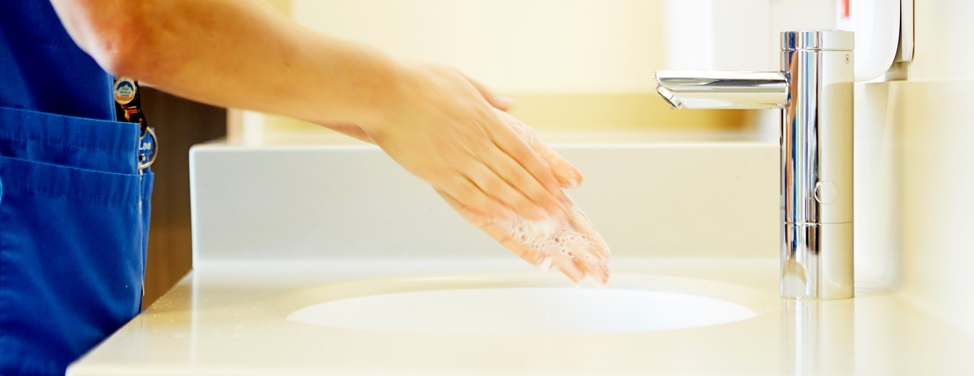California state law requires hospitals to test some patients for a germ called methicillin-resistant Staphylococcus aureus, or MRSA. If your child is admitted to UCSF Benioff Children's Hospital for surgery and is considered susceptible to MRSA infection, he or she will be tested for this germ.
What is MRSA?
Staphylococcus aureus, pronounced staff-ill-oh-KOK-us AW-ree-us, or "staph" are a common bacteria. MRSA is a type of staph that isn't killed by penicillin or similar antibiotics, the drugs most commonly used to treat staph infections. It is resistant to many antibiotics, making it more difficult to treat.
About one out of every three people has staph on his or her skin or in the nose without it causing any problem, and about one out of every 100 people carry MRSA without getting sick. However, in some cases staph or MRSA cause an infection. An infection may look like any of the following:
- Sores that look and feel like spider bites
- Red, painful bumps under the skin
- Swollen, hot pus-filled cut
- Blisters filled with fluid or red skin with a honey-colored crust, usually on the face
- Area of red, warm firm skin that's painful and gets larger, usually on the legs
Infections caused by MRSA don't look any different from infections caused by ordinary staph.
What the Test Results Mean
If an MRSA test is positive, your child is considered "colonized" with MRSA. Being colonized simply means that at the moment your child's nose was swabbed, MRSA was present. If the test is negative, it means your child isn't colonized with MRSA.
In most cases, being colonized with MRSA doesn't make you sick and no treatment is necessary. If your child has an infection, the doctor will treat it. Treatments may include draining the sores or taking antibiotics.
What to Do if Your Child Tests Positive for MRSA
Carry on with your daily life as usual and follow the simple suggestions listed below to help prevent MRSA from causing problems.
In the Hospital
- Wash your hands with soap and water or an alcohol-based hand rub when you enter and leave your child's room.
- Remind your child's doctors, nurses and other health care providers to clean their hands before touching your child or items in the room.
- Ask visitors to clean their hands when they enter and leave your child's room.
At Home
- Your child should wash his or her hands often — before eating or drinking, after using the bathroom and after touching used dressings or bandages. Other people in the household should clean their hands often as well.
- Make sure you know how to care for any wounds or intravenous (IV) "lines," such as a catheter or port.
- Keep wounds clean. Change bandages as instructed until wounds have healed.
- Routinely clean the surfaces your child touches frequently, such as faucets, doorknobs, remote controls, keyboards and chair and couch arms. Use a commercial cleaning "wipe" or soap and water.
Staph and MRSA can spread to others through skin-to-skin contact and by touching surfaces contaminated with the bacteria, such as towels or used bandages. It's generally not spread through the air.
What to Do if Your Child Has an Infection
Routine cleaning of your child's hands and his or her environment is the best way to prevent the infection from spreading to others.
If your child is prescribed antibiotics, make sure he or she takes all of them, even if the symptoms of the infection improve. If the infection doesn't improve within several days, call your child's doctor.
Your child's doctor or nurse can answer any other questions you have about MRSA.






























